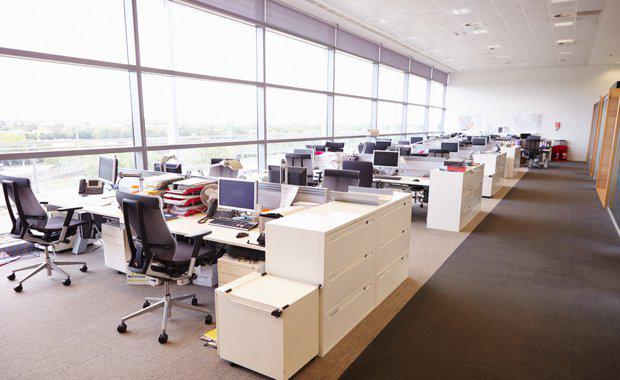When it comes to capturing tenant loyalty, many office building landlords are falling short in key areas such as wellness, base building services and providing a better customer experience.
This is an insight from CBRE’s very first Australia Occupier Survey.
The survey concludes that landlords shouldn’t assume that their “stayers” are happy and that areas such as wellness, improved service delivery and “smart buildings” with more advanced IT platforms are becoming increasingly critical in future workplace decisions.
The survey findings are based on interviews with 100 senior decision makers in larger organisations and ASX 200 companies, occupying an average office size of 5,600 square metres.
CBRE Associate Director of Research Felice Spark said the purpose had been to identify and measure the current and emerging factors driving occupiers’ “stay or go” decision making, including future real estate strategies, how workplace formats were evolving and whether or not wellness was delivering better business outcomes.
“One of the key findings was the heightened focus on wellness, with 74% of respondents indicating that they would value a wellness offering in their workplace,” Ms Sparke said.

“However, while 68% of companies surveyed have a policy or program that includes wellness initiatives for their staff, only 47% currently occupy a building that provides facilities to support this, reflecting a demand/supply imbalance in the marketplace.”
Respondents were also asked to rate a range of building selection criteria on a scale of 1 to 10, in regard to both importance and satisfaction levels.
“Where we saw one of the biggest gaps was in relation to base building services and their ability to support the delivery of technology,” Ms Spark said, noting that addressing this would have the biggest impact on tenant satisfaction levels.
CBRE Director of Workplace Strategies Matt Strudwick said the findings highlighted that companies were increasingly viewing the workplace as a “service” rather than pure bricks and mortar.
“The ‘workplace as a service’ thinking is seeing the rise of flexible options such as WeWork, a demand for more services and amenity such what is on offer at DEXUS Place and, importantly, a desire for the building’s to be smart,” Mr Strudwick said.
“Occupiers are looking for buildings which can help them do everything from order a coffee from their desk ready for pick up as they head out of the door, through to data that can help them understand the demand patterns of their people.”
Factors Driving Relocation
Of the respondents, 30% were occupiers who had relocated in the past two years, 34% were occupiers who were planning a move in the next three years (“movers”) and 36% were occupiers not relocating in this five year window (“stayers”).
CBRE’s findings show that the movers are looking for the next evolution in their workplace to enable technology and support employee wellbeing and collaboration.
Of the three groups surveyed, the movers gave the lowest satisfaction ratings to the wellness offering and share workplace facilities currently offered in their building and are particularly dissatisfied in the areas of lift performance, technology delivery and Indoor Environmental Quality.

Landlords are also cautioned not to assume that their “stayers” are happy, as they had the lowest satisfaction scores overall, particularly in relation to lift performance, workplace efficiency and technology.
They were also the most dissatisfied with their end-of- trip (EOT) facilities – suggesting that an upgrade to EOT could be one approach for landlords to assist with tenant retention.
Wellness Strategies
CBRE Senior Director, Asset Services, Amanda Steele said the survey highlighted that a growing number of occupiers surveyed were now measuring the impact of their wellness initiatives on staff productivity.
Respondents with wellness strategies reported substantially improved metrics in regard to a reduction in absenteeism levels and workers’ compensation claims, higher scores in employee satisfaction surveys and improved staff retention levels.
“Those enlightened companies that are investing in wellness programs are reaping the benefits in relation to productivity, talent attraction and retention,” Ms Steele said.
“Long-term, these organisations are the ones that millennials will want to work with and for. It's a low-cost, high result strategy.”
Workplace Formats
Of the respondents surveyed, 89% have either a combination of open plan/offices or a pure open plan workplace, with only 3% currently defining their workplace as activity-based working.
However, by 2018, 57% of these occupiers expect to increase their staff headcount but only 22% plan to increase their net lettable area accordingly – leading to a forecast 5.5% decrease in work space ratios.
“There is a continued drive for efficiency in workplace portfolios, with the survey highlighting that tenants are looking to maintain their footprint but increase their headcount. This is driving the need for better performing workplaces and flexible workplace formats,” Mr Strudwick said.
Customer Experience
The survey findings highlight that the next frontier in capturing tenant loyalty relates to developing the customer relationship, which is now extending to include all building occupants and visitors.
“When asked what their building manager was doing really well, most occupiers (50%) focused on the functional aspects of building management, calling out responsiveness, good communication and good basic service/maintenance,” Ms Steele said.

“Only 10% commented on tenant services, and a surprisingly high 46% of respondents gave no feedback stating that nothing stood out, highlighting the need to deliver a more enhanced tenant services offering.”
Looking to the future, 28% of occupiers said they believed the next frontier of customer service delivery revolved around the work environment (flexible work practices, floorplate flexibility, shared workspace facilities and environmental sustainability), followed by health & wellness (25%), tenant services such as a full service concierge and shared business support services (24%) and building infrastructure including “smart buildings” and better internal environmental monitoring (21%).













